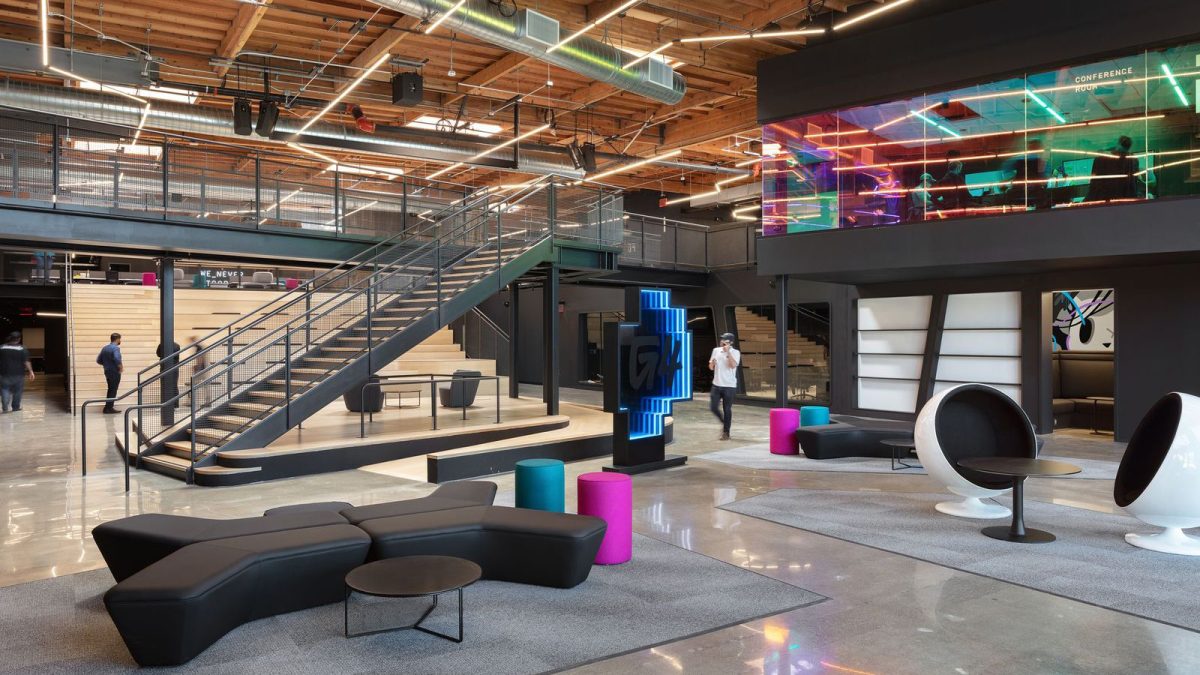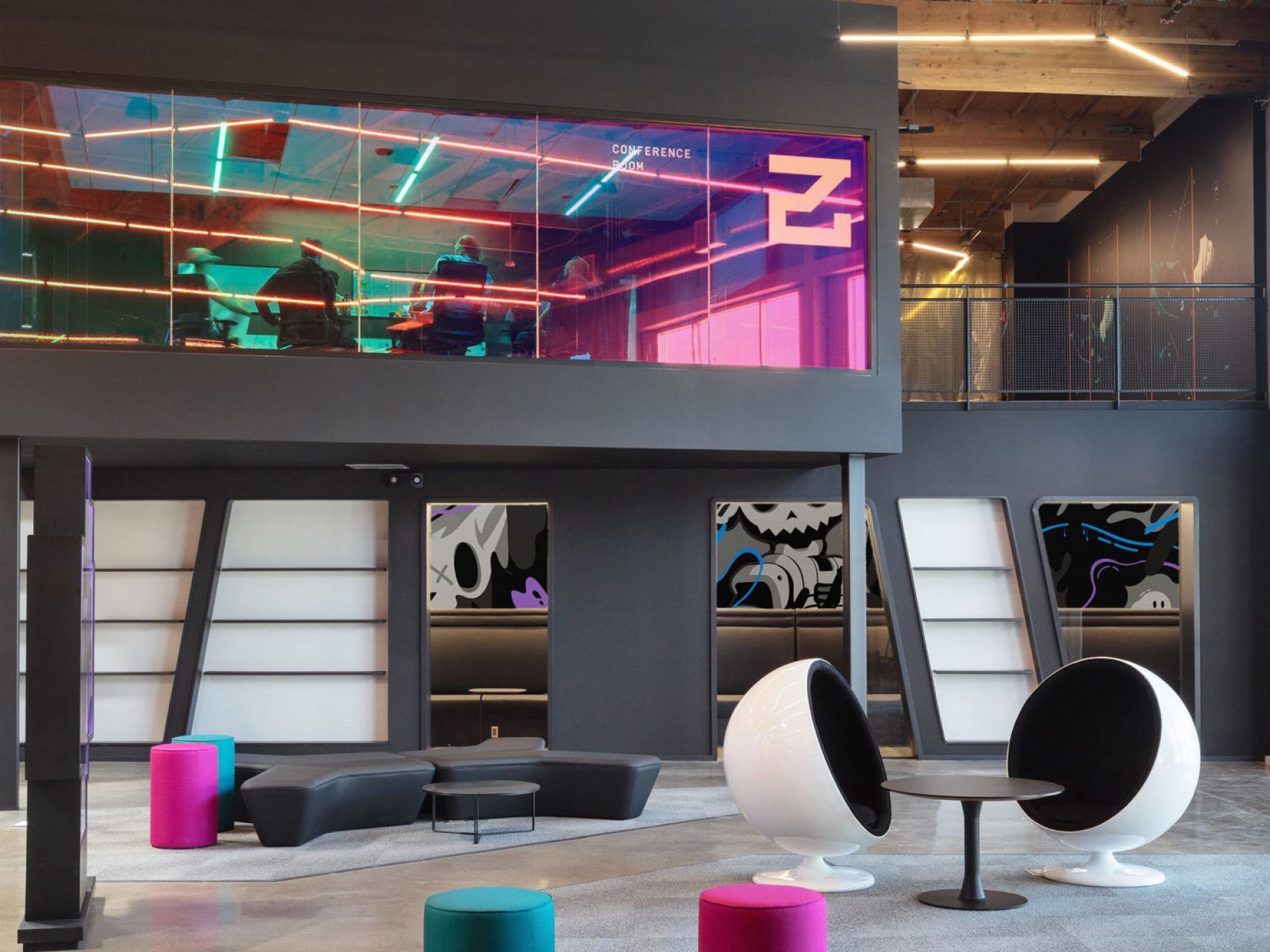News

October 19, 2021
January 10, 2022

Immersive experiences have always been vital to the success of a live event or venue, and fans are continuously craving more customized and unique experiences. This fan-centric demand has prompted a surge in short turnaround projects that breathe new life into spaces. What was once renovated every decade is now being reimagined every three years to realign the space and environment with the latest relevant design and cultural trends.
The decreased life cycle for premium hospitality and high-design spaces can demand that design and construction need to be completed on a tight timeline and in a way that mitigates disruption to revenue generation. As these stakes are raised, a reliable path forward becomes paramount, driving the industry to explore project delivery models that are rooted in brand integrity, improve team collaboration, establish predictable budgets and compress design and construction schedules.
The design-led design-build (DLDB) delivery is this path forward. In this approach, the architect contracts directly with the owner as the design-builder and leads the design and construction team. The architect subcontracts with a trusted general contractor, putting the architect at the center of the project to facilitate team collaboration and project success.
Under a single contract, the project owner has a sole point of contact with the architect related to all design and construction work. This model puts the general contractor at the table with the designer from day one, where they can discuss design details, budgeting and scheduling, from concept to completion. DLDB puts the owner’s objectives and brand integrity at the heart of the project, allowing the entire team to maintain focus on the high quality of design throughout the life of the project.
As one of the most progressive methods of project delivery, DLDB has quickly become an industry standard for projects where schedule is critical, offseason windows are tight and building shutdowns are infeasible. When the design, schedule and budget are established with the client from the start, the project team, acting as a single unit, can stay ahead of any challenges with ease. Streamlined decision-making minimizes the chances of last-minute changes or reworked designs, ultimately reducing or even eliminating cost increases and misaligned expectations. Industrywide sweeping challenges such as the shortage in skilled labor or supply chain delays become manageable when the project team is consistently aligned from day one. The DLDB approach also allows construction to be fast-tracked without losing control of costs. This on-time and on-budget project delivery is ideal for renovations seeking high-impact results with minimal structure, such as a space that could be refreshed in an offseason or a project that is ready to realize its vision quickly.
With a design-led design-build (DLDB) project delivery, the architect contracts directly with the owner as the design-builder and leads the design and construction team. The architect subcontracts with a trusted general contractor, putting the architect at the center of the project to facilitate team collaboration and project success.
In April 2020, Populous partnered with the Comcast Spectacor team to create a radical new home for G4’s digital and television network office and broadcast studio as they set out to relaunch G4TV and dedicate a space to esports training and gaming. As the world shut down due to the pandemic, Populous and G4 ramped up. The team worked together remotely to reimagine a historic studio building in Burbank, California, to become the home for the next generation of the G4 story.
An ambitious renovation timeline coupled with G4’s unique brand made this an ideal project for Populous Design Build. Populous ignited its long-time partnership with Shawmut Design and Construction to reimagine the future of what would become a 67,000-square-foot space that boasts an aesthetic that blends a 24/7 broadcast studio, multiverse-ready collaborative workplace and professional gaming environment for an industry-defining new building type.
From the outset of the adaptive reuse project, Populous, Shawmut and G4 dreamed big about the future, experimented and collaboratively designed the space. The team dedicated time to understanding the G4 market, its dedicated following and its brand. This early and constant collaboration provided Shawmut with the details and context around the importance of G4’s brand integrity that would come alive through the design. It also allowed the team to estimate costs more accurately at every phase. Populous provided the highest quality design possible, working closely with Shawmut on scope, cost and schedule to carefully consider each aspect of the building, its technology systems and all materials used in the renovation.
As a result, G4’s headquarters offers an immersive experience for its fans, visitors and staff, with the organization’s brand engrained in every detail from the spatial geometry and the interior colors to the graphic, bold artwork. It is a modern-day example of reinventing existing infrastructure for its highest and best use. In breaking out of the traditional project delivery model, Populous Design Build was able to speak with one voice throughout the entirety of the project, decrease production time and increase the design quality of the renovated space — all while working remotely.
Lorem ipsum dolor sit amet consectetur, adipisicing elit. Non facere corporis et expedita sit nam amet aut necessitatibus at dolore enim quis impedit eius libero, harum tempore laboriosam dolor cumque.
Lorem, ipsum dolor sit amet consectetur adipisicing elit. Illo temporibus vero veritatis eveniet, placeat dolorem sunt at provident tenetur omnis, dicta exercitationem. Expedita quod aspernatur molestias eum? Totam, incidunt quos.